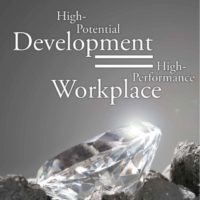Once high-potential employees reach their full actualisation, performance in the company will improve overall. When performance improves, morale improves. When morale improves, everybody (for the most part) is happy. And when everybody is happy, the problems that may arise from a HiPo recognition program will take care of themselves. In research for her book, “The Custom Fit Workplace: Choose When, Where, and How to Work and Boost Your Bottom Line” (Wiley Publication), Joan Blades visited a Dr. Pepper manufacturing plant in Texas, which has a high-performance workplace. She writes that one of the managers she spoke with made this analogy: “Lots of people look like limestone and get treated like limestone, tossed aside. Traditional management styles overlook the diamond inside the limestone. [A high-performance workplace] recognises recognizes the diamonds.” Blade went on to write that high-performance workplaces benefit from valuing workers’ goodwill and life experiences. Structuring work to empower the 95% who are the best workers is a good idea (the 5% who aren’t doing the optimal work simply don’t belong there, and are responsibly counselled out).
There are four things companies need to do to more effectively start identifying and actualising their high-potential employees.
1. Redefine “potential” by adopting a clearer definition that accounts for the key attributes employees need to have in order to advance in the company. This includes the aspiration to advance, the ability to manage and lead others effectively, and the commitment to realise their career goals with their current employer.
2. Measure potential objectively rather than relying on the subjective nominations or evaluations of management—by assuming a systematic process for identifying high-potential talent through talent assessment and evaluation.
3. Ask for commitment in return for career opportunities. Companies can evaluate engagement and act to mitigate flight risk among high-potential employees by evaluating their present engagement as well as their long-term commitment to the organization.
4. Create differentiated development experiences. Most high-potential programs (equipping your most promising people to handle the challenges associated with moving into a new leadership role) provide opportunities for incremental skill building but fail to prepare high-potential employees for realistic future roles. The best organisations help HiPo’s learn new skills, but also apply existing skills in different roles by exposing them to high-impact development experiences.
Contact us for more information on assessments that can assist in the development of people.



